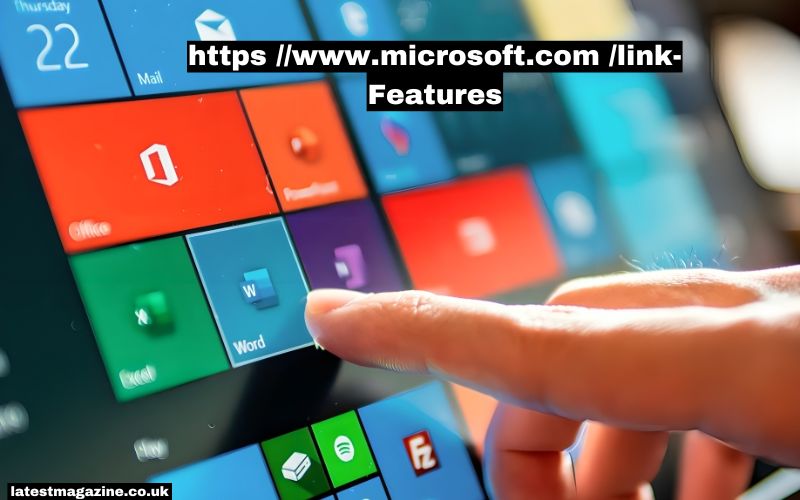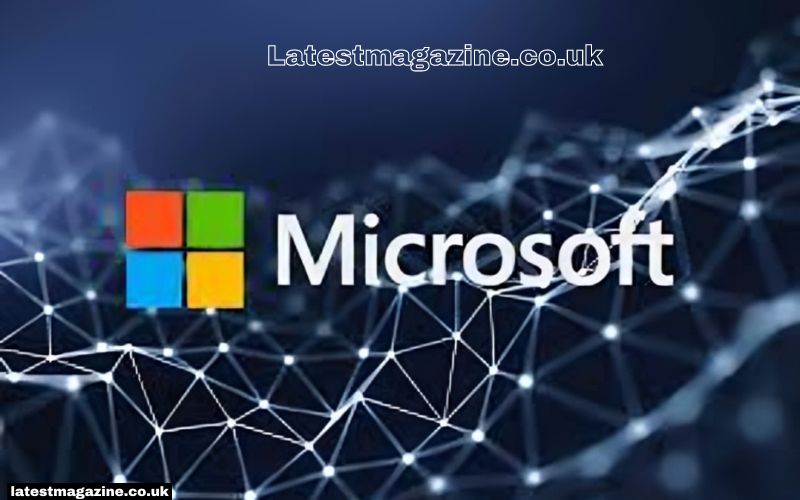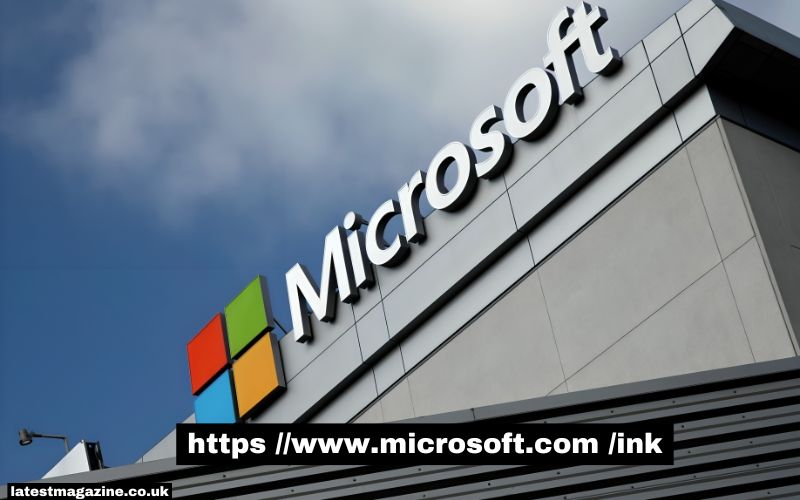In the rapidly evolving landscape of digital technology, the quest for more intuitive and natural ways to interact with our devices has led to remarkable innovations. Among these, Microsoft Ink stands out as a pioneering technology that has fundamentally changed how users interact with their digital devices. By bringing the familiar feel of pen and paper into the digital realm, Microsoft Ink has opened up new possibilities for creativity, productivity, and accessibility.
As we increasingly rely on digital devices for work, learning, and entertainment, the need for versatile and efficient input methods has grown. Traditional methods like keyboards and mice, while effective, lack the natural feel of pen and paper. This is where Microsoft Ink comes into play. It bridges the gap between the physical and digital worlds, offering users a more organic and seamless way to interact with their devices. This article delves deep into the world of Microsoft Ink, exploring its features, supported devices, applications, and its impact across various industries.
What is Microsoft Ink?
Microsoft Ink (https //www.microsoft.com /link) is a suite of digital inking tools integrated into the Windows operating system and various Microsoft applications. It allows users to write, draw, and navigate directly on their device screens using a stylus or digital pen. The technology replicates the experience of writing with a traditional pen on paper, providing a natural and fluid interaction with digital content.
The journey of Microsoft Ink began with the release of Windows XP Tablet PC Edition in 2002. This was the first major attempt by Microsoft to integrate digital ink capabilities into its operating system. The technology was initially geared towards business professionals and students, offering a new way to take notes, annotate documents, and interact with digital content. Over the years, Microsoft Ink has evolved significantly, incorporating advanced features such as pressure sensitivity, palm rejection, and tilt support. Today, it is an integral part of the Windows ecosystem, supported by a wide range of devices and applications.
Microsoft Ink Features
Microsoft Ink is designed to provide a rich and immersive inking experience, with a host of features that cater to different user needs. These features include:

- Natural Writing Experience: One of the standout features of Microsoft Ink is its ability to replicate the natural feel of writing with a traditional pen. The ink flows smoothly and with minimal latency, creating an experience that feels intuitive and responsive. Whether you’re taking notes, sketching, or signing a document, Microsoft Ink ensures that your writing feels natural and effortless.
- Pressure Sensitivity: Pressure sensitivity is a crucial feature for artists and designers. It allows for dynamic control over the thickness and opacity of lines based on how hard the pen is pressed against the screen. For instance, pressing lightly with the pen may produce a thin, delicate line, while applying more pressure results in a thicker, bolder stroke. This feature enables users to create more expressive and nuanced drawings, making Microsoft Ink a powerful tool for creative professionals.
- Palm Rejection: Writing or drawing on a touchscreen device can be challenging if the device mistakenly registers your palm as input. To address this issue, Microsoft Ink includes advanced palm rejection technology. This feature intelligently ignores touch input from your palm while you’re using the pen, allowing you to rest your hand on the screen comfortably without disrupting your work.
- Tilt Support: Tilt support is another feature that enhances the versatility of Microsoft Ink, particularly for artists. It allows users to tilt the pen to create shading effects, similar to how you might use the side of a pencil on paper. This capability adds depth and texture to digital drawings, making it easier to achieve realistic shading and highlighting effects.
- Ink to Text Conversion: Microsoft Ink’s ink-to-text conversion feature is a game-changer for note-takers and professionals. This feature allows you to convert handwritten notes into typed text with just a few taps. Whether you’re jotting down meeting minutes or brainstorming ideas, this feature makes it easy to digitize and organize your notes. The converted text can be edited, searched, and shared, making it a valuable tool for productivity.
Supported Devices
Microsoft Ink is supported on a wide range of devices, catering to different user preferences and needs. These devices include:
- Surface Family: Microsoft’s Surface devices are at the forefront of digital inking technology. The Surface Pro, Surface Laptop, Surface Book, Surface Go, and Surface Studio all come equipped with the Surface Pen, a high-precision digital pen designed to work seamlessly with Microsoft Ink. These devices are favored by professionals, artists, and students for their versatility and powerful inking capabilities.
- Windows 10 and 11 Devices: Many laptops, tablets, and 2-in-1 devices running Windows 10 or Windows 11 support Microsoft Ink. These devices often come with a compatible stylus or offer support for third-party digital pens. Examples include the HP Spectre x360, Dell XPS 13 2-in-1, and Lenovo Yoga series. These devices provide a flexible and portable solution for users who want to take advantage of Microsoft Ink’s features on the go.
- Third-Party Devices: Microsoft Ink is not limited to Microsoft-branded devices. Several third-party manufacturers produce devices that support Microsoft Ink, including brands like Wacom, Samsung, and Huion. These devices range from high-end graphics tablets to affordable styluses, offering a wide array of options for users with different budgets and requirements.
Software and Applications
Microsoft Ink is deeply integrated into various software applications, making it a versatile tool for a wide range of tasks. Some of the key applications that support Microsoft Ink include:

- Microsoft Office Suite: Microsoft Ink is fully integrated into the Office Suite, providing users with powerful tools for document annotation and collaboration. In Word, you can use the pen to mark up documents, highlight text, and add handwritten comments. PowerPoint allows you to draw directly on slides during presentations, making it easy to emphasize key points and engage your audience. Excel’s inking tools let you draw charts, highlight cells, and create custom annotations. These features make Microsoft Office a more dynamic and interactive platform for both individual and collaborative work.
- Microsoft Whiteboard: Microsoft Whiteboard is a collaborative digital canvas that allows users to brainstorm ideas, draw diagrams, and share notes in real-time. It is an essential tool for remote teams and educators, offering a shared space where everyone can contribute. With Microsoft Ink, users can easily draw, write, and interact with content on the whiteboard, making it an effective tool for visualizing ideas and concepts.
- OneNote: OneNote is a digital note-taking app that fully embraces Microsoft Ink’s capabilities. It allows users to create handwritten notes, draw diagrams, and even annotate images. One of the most powerful features of OneNote is its ability to search handwritten notes, making it easy to find specific information quickly. OneNote also supports ink-to-text conversion, allowing you to digitize your handwritten notes for easy editing and sharing.
- Adobe Suite Compatibility: Microsoft Ink is compatible with several Adobe Creative Cloud applications, including Photoshop and Illustrator. This compatibility makes it an excellent tool for artists and designers who want to leverage the advanced features of Adobe’s software. For example, in Photoshop, you can use the pen to create detailed digital paintings, apply pressure-sensitive brush strokes, and achieve precise control over your artwork. In Illustrator, the pen can be used to draw vector graphics with accuracy and ease.
Integration with Windows OS
Microsoft has integrated its inking technology deeply into the Windows operating system, providing users with a range of tools and features that enhance the inking experience. Some of the key integrations include:
- Ink Workspace: The Windows Ink Workspace is a dedicated hub that provides quick access to inking tools and apps. It includes shortcuts to Sticky Notes, Sketchpad, and Screen Sketch, allowing users to start inking immediately without having to open specific applications. The Ink Workspace also offers suggested apps that support inking, making it easier for users to discover new ways to use their digital pen.
- Sticky Notes: Sticky Notes is a simple yet powerful app that allows users to create digital post-it notes on their desktop. With Microsoft Ink, you can handwrite your notes, and the app will even recognize your handwriting and convert it to text if needed. Sticky Notes are perfect for jotting down quick reminders, creating to-do lists, or capturing spontaneous ideas.
- Sketchpad: Sketchpad is a basic drawing app included in the Windows Ink Workspace. It provides a blank canvas for quick sketches, annotations, or brainstorming sessions. The app includes a variety of pen types, colors, and line thicknesses, allowing users to customize their drawings. Sketchpad is ideal for users who want a simple and distraction-free environment for their creative work.
- Screen Sketch: Screen Sketch is a feature that allows users to capture screenshots and annotate them with Microsoft Ink. It is particularly useful for creating tutorials, providing feedback, or highlighting specific areas of a screen capture. Screen Sketch can be accessed directly from the Ink Workspace, making it a convenient tool for users who frequently need to annotate screenshots.
Use Cases and Applications
Microsoft Ink has a wide range of use cases across various industries and sectors. Here are some of the most common applications:
- Educational Sector: Microsoft Ink is widely used in the education sector, where it enables students and teachers to interact with digital content in a more natural way. Students can take handwritten notes, annotate textbooks, and complete assignments digitally. Teachers can use Microsoft Ink to create interactive lessons, mark up student work, and provide feedback. For example, a math teacher might use Microsoft Ink to write equations on a digital whiteboard, while students follow along on their own devices. The ability to convert handwritten notes into text also makes it easier for students to review and organize their notes.
- Design and Creativity: For example, a graphic designer working in Adobe Illustrator might use Microsoft Ink’s pressure sensitivity to create varying line weights in their vector artwork. Similarly, an illustrator using Photoshop can take advantage of tilt support to achieve intricate shading and textures in their digital paintings. Microsoft Ink provides a natural and intuitive way for creatives to express their ideas and bring their visions to life.
- Professional and Business Use: In the business world, Microsoft Ink enhances productivity and efficiency in several ways. Professionals can use digital ink to sign documents electronically, saving time and reducing the need for physical paperwork. During meetings, users can take handwritten notes or annotate presentation slides directly on their device, facilitating clearer communication and better collaboration. For example, a project manager might use Microsoft Ink to sketch out a flowchart during a team meeting, capturing ideas in real-time and ensuring everyone is on the same page.
- Accessibility and Inclusive Design: Microsoft Ink plays a crucial role in making digital devices more accessible to individuals with disabilities. For those with motor impairments, using a digital pen can be easier than traditional input methods like a mouse or keyboard. The natural writing experience provided by Microsoft Ink also benefits individuals with learning disabilities, such as dyslexia, by allowing them to interact with digital content in a way that feels more intuitive and engaging. For instance, students with dyslexia might use Microsoft Ink to highlight and annotate text, making it easier to comprehend and study.
Benefits of Using Microsoft Ink
The adoption of Microsoft Ink brings several benefits across various domains:
- Enhanced Productivity: Microsoft Ink streamlines workflows by allowing users to quickly jot down notes, annotate documents, and draw diagrams without switching between different input methods. This efficiency is particularly valuable in professional and educational settings, where time is often of the essence. For example, a researcher might use Microsoft Ink to annotate a PDF with comments and highlights, facilitating a more efficient review process.
- Improved Creativity: The natural and responsive inking experience offered by Microsoft Ink fosters creativity, enabling users to explore ideas and concepts more freely. Artists can create detailed and expressive digital artwork, while designers can experiment with different styles and techniques. The ability to create and manipulate digital content with a pen provides a level of precision and flexibility that traditional input methods may lack.
- Increased Accessibility: Microsoft Ink contributes to making technology more inclusive by providing alternative input methods for individuals with disabilities. By accommodating various needs and preferences, Microsoft Ink helps ensure that digital devices are accessible to a broader audience. This inclusivity is essential in creating equitable opportunities for all users, regardless of their physical abilities or learning preferences.
Future of Microsoft Ink
Looking ahead, Microsoft Ink is poised for continued growth and innovation. Several trends and developments are shaping the future of digital inking:
- Integration with AI: Microsoft is exploring the integration of artificial intelligence (AI) with Microsoft Ink to enhance its capabilities. AI-powered features could include more advanced handwriting recognition, predictive text, and gesture recognition. For example, AI could enable Microsoft Ink to understand complex gestures and adapt the digital pen’s behavior accordingly, providing a more intuitive and responsive inking experience.
- Expanded Device Compatibility: As digital inking becomes more popular, Microsoft is likely to expand its compatibility with a wider range of devices. This may include integration with new types of hardware and partnerships with additional manufacturers. The goal is to make Microsoft Ink accessible to even more users, regardless of the device they choose.
- Ongoing Refinements: Microsoft continues to invest in refining its inking technology to improve performance, accuracy, and user experience. Future updates to Windows and Microsoft applications are expected to include enhancements to inking tools, making them more powerful and versatile. This ongoing development will ensure that Microsoft Ink remains at the forefront of digital interaction technology.
Conclusion
Microsoft Ink represents a significant advancement in how we interact with digital devices. By providing a natural and intuitive way to write, draw, and navigate, Microsoft Ink bridges the gap between the physical and digital worlds. Its wide range of features, supported devices, and applications make it a versatile tool for creativity, productivity, and accessibility.
From enhancing the educational experience to empowering artists and designers, Microsoft Ink has made a profound impact on how we engage with digital content. Its integration with the Windows operating system and various Microsoft applications ensures that users can seamlessly incorporate digital inking into their daily routines.
As Microsoft continues to innovate and refine its inking technology, we can expect even more exciting developments in the future. Whether you’re a student, professional, artist, or someone with accessibility needs, Microsoft Ink offers a range of benefits that can enhance your digital experience. As we look forward to the future, it’s clear that Microsoft Ink will remain a key component of modern computing, shaping how we interact with technology and express our ideas in the digital age.
For More Information, Visit: Latestmagazine

